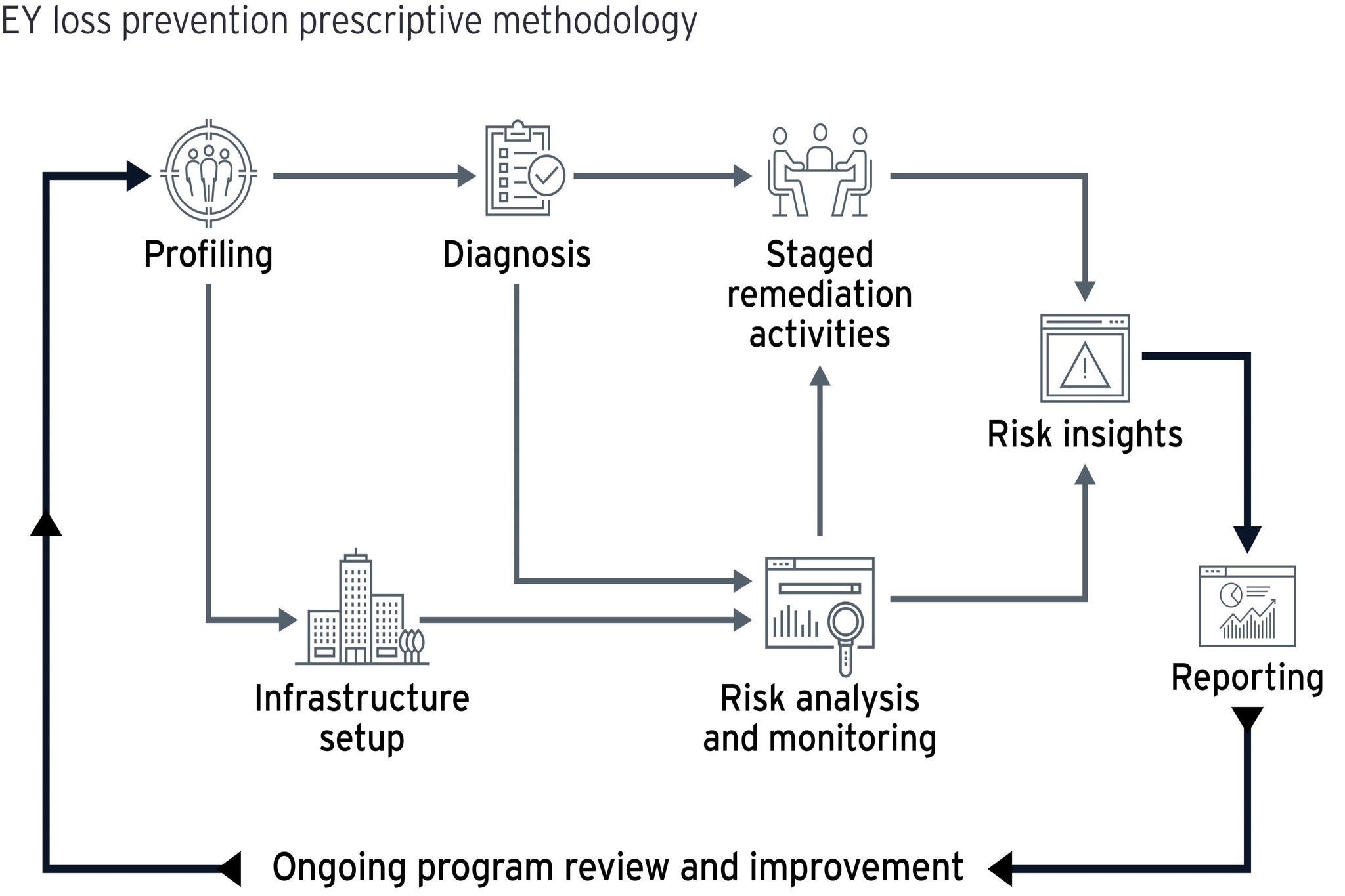EY refers to the global organization, and may refer to one or more, of the member firms of Ernst & Young Global Limited, each of which is a separate legal entity. Ernst & Young Global Limited, a UK company limited by guarantee, does not provide services to clients.
Loss Prevention Services
What EY can do for you
EY professionals adopt a consultative approach that focuses on prevention, detection and mitigation measures from business, operation and technology perspectives. The broad range of EY Loss Prevention Services comprises: profiling fraud and loss schemes; using artificial intelligence (AI) and analytics technologies for process and control evaluation; implementing workflows and escalation procedures; and developing risk monitoring control measures, loss calculations, return on investment tracking, and reporting and remediation procedures.

EY Loss Prevention Services are supported by EY Virtual Analytics Infrastructure (EY Virtual), a microservices-based AI and forensic data analytics platform that is designed to support the needs of legal and compliance teams.

Sector focus
EY professionals support industry sectors worldwide with a network of professionals. EY Loss Prevention Services industry teams are tailored to suit your particular needs while taking into account the main factors influencing your business.
The team
Our latest thinking
How can trust survive without integrity?
The EY Global Integrity Report 2024 reveals that rapid change and economic uncertainty make it harder for companies to act with integrity. Read our findings.





